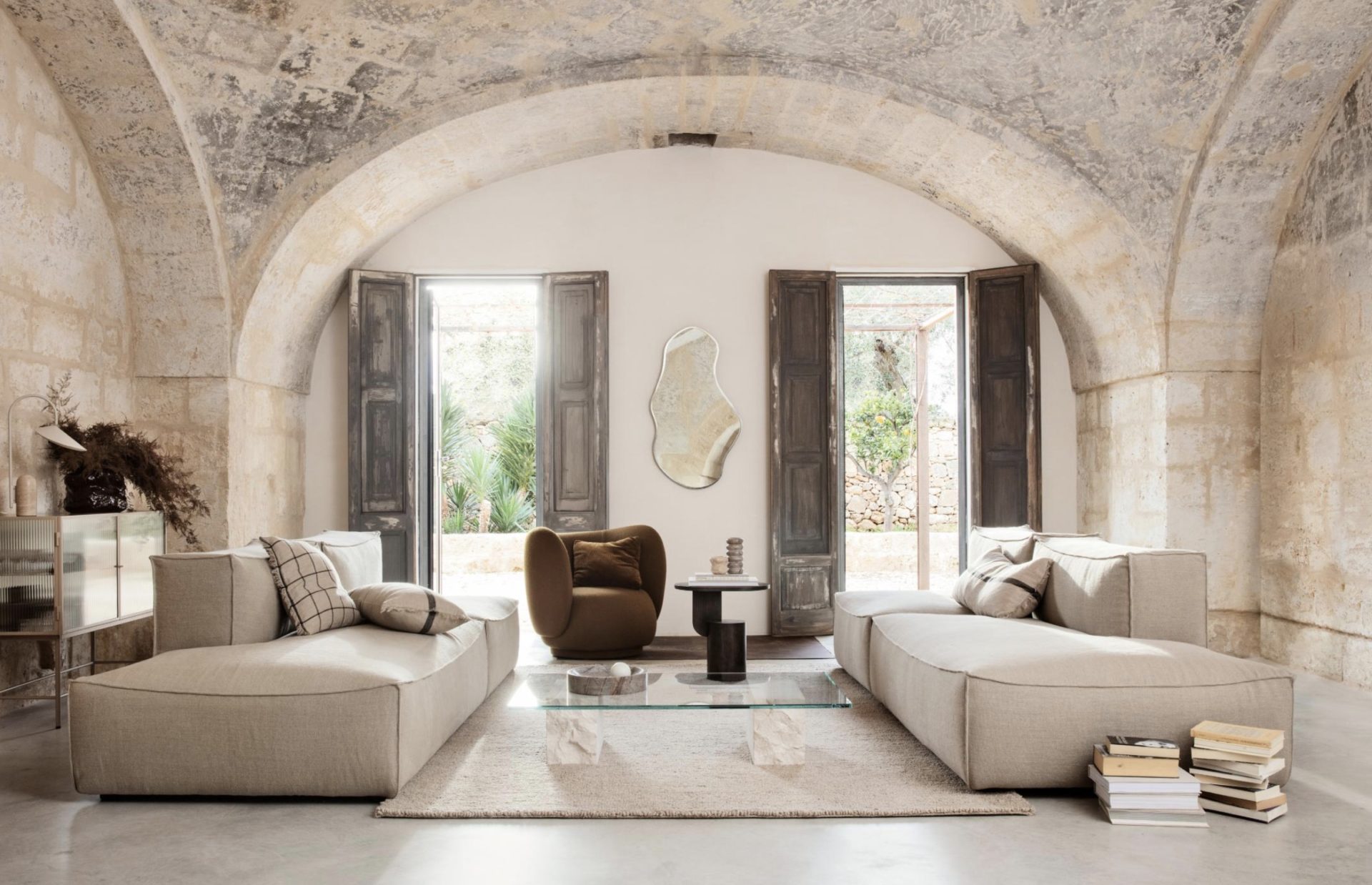Not many people understand what is happening to our world and economy right now but experts are predicting the coronavirus epidemic will lead to “a global recession of a magnitude that has not been experienced before” that will eventually allow humanity to reset its values. Find out how we will slow down, get back to basics, and change the way we live, consume, entertain, decorate and travel, in ways we never imagined…
In the end we will be forced to do what we should have done in the first place.
The Industrial Revolution forced the world outside and off to work, and COVID-19 may well drive many people back into their homes. Read more, ‘The Home Lockdown Guide: How To Prepare for Corona Virus Quarantine.’ The breakneck speed of the modern world is over, allowing us a moment of contemplation and respite from the hectic, frenetic treadmill and pace of life that had become faster than ever. Here’s how our homes will change in the years ahead.
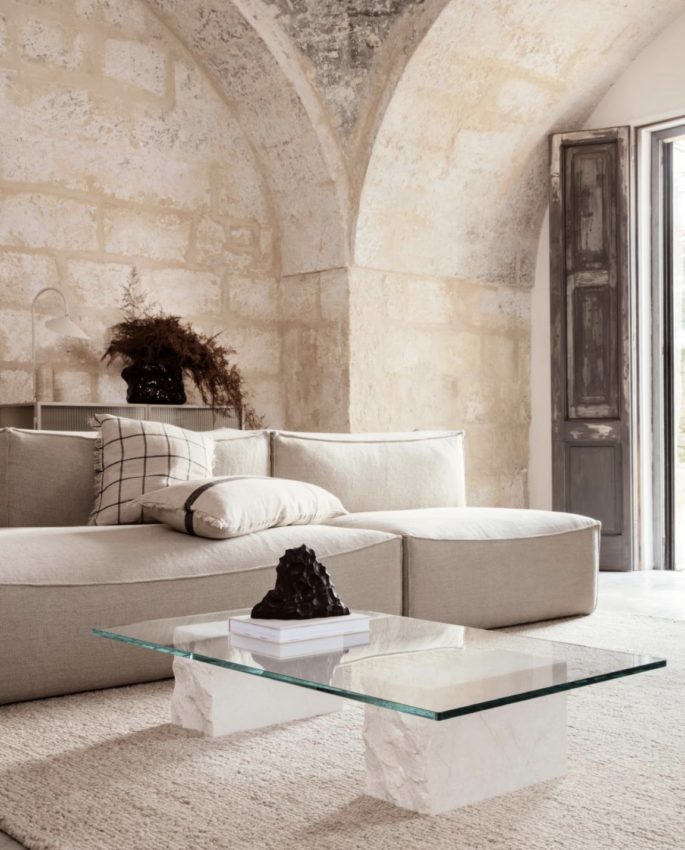
The breakneck speed of the modern world is over, allowing us a moment of contemplation and respite from the frenetic treadmill and pace of life. Interior via Ferm Living Spring/Summer 2020, fermliving.com
A Quarantine of Consumption
We’ll be using what we have. Shopping our own house for things. Rejecting the commercial volcano of consumption to enjoy more humble aspirations. “We are entering a quarantine of consumption where we will learn how to be happy with a simple dress, rediscovering old favourites we own, reading a forgotten book and cooking up a storm to make life beautiful,” says trend forecaster Li Edelkoort. “We’ll be trying old things in new ways at home and repurpose things in creative ways to simplify our lives. Read more, ‘How To Work From Home If You’ve Never Done It Before.’
The virus will show how economic disruption can have environmental benefits.
“The recent pictures of the air above China showed how two months without production cleared the skies and allowed people to breathe again,” she said, referring to the fact that carbon emissions and pollution from Chinese industry have declined since the virus first hit the country. “This means that the virus will show how slowing and shutting down can produce a better environment which will be visible on a large scale, Edelkoort told Dezeen magazine.
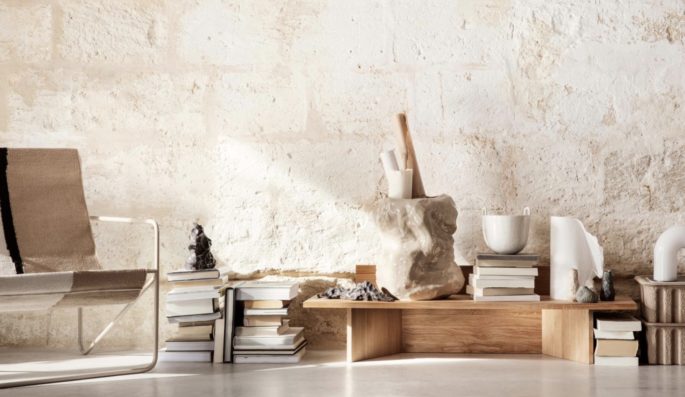
Ferm Living Spring/Summer 2020, fermliving.com
Anti-excess Consumerism
As awareness of environmental damage rises, we will consciously be stepping back from the ledge of excess consumer culture. Bloggers, whose very existence and success have previously hinged on reviewing the latest products and releases, are starting to actively denounce the industry’s endless cycle of new products. One beauty YouTuber is taking a radical stance; Samantha Ravndahl, who as of January 2020 had amassed 976,000 subscribers, has asked brands to stop sending her PR packages and free products to review. “Every time a new product was sent to me, I’d look at it and think, ‘Well, it’s here, it’s new, I might as well review it,’” Ravndahl explained. “I wouldn’t want to be told to buy something new when just last week, I’d been told to buy something else that was really similar. That’s not realistic, and that’s not how people buy things.” Read more on sustainability in our 2020 Trends Report.
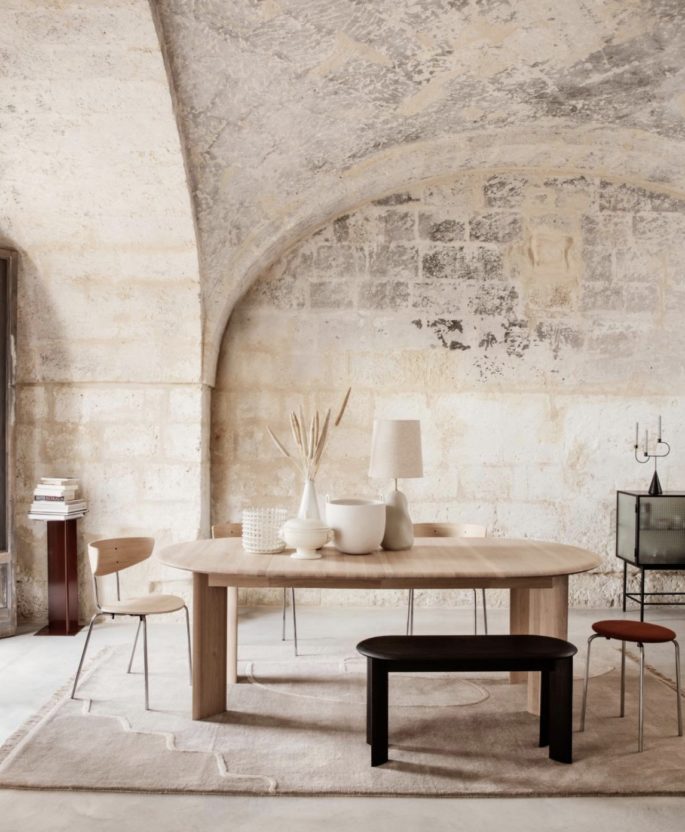
The impact of the virus outbreak will force us to slow down the pace, work from home, entertain among close friends or family, learn to become increasingly self-sufficient and mindful. Image via Ferm Living Spring/Summer 2020, fermliving.com
Slowing Down
The impact of the virus outbreak will force us to slow down the pace, work from home, entertain among close friends or family, learn to become increasingly self-sufficient and mindful. To keep the planet going we will make changes to the way we live, travel, consume and entertain. There is no way we can continue to produce as many goods and still expect the myriad choices we have grown accustomed to. The debilitating mass of information has numbed our culture. Read more, ‘A Harvard Professor Says, Buying Time Promotes Happiness.’
There is a growing awareness amongst younger generations that ownership and the hoarding of everything from clothes to cars is no longer attractive.
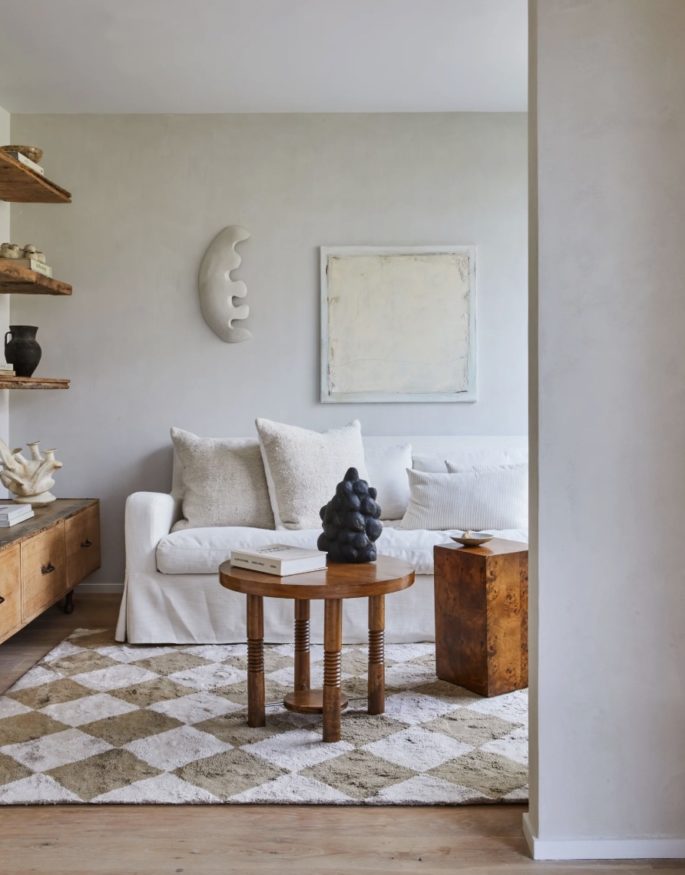
Improvisation skills will become the highest asset. Lifestyle guru, Athena Calderone updates her beach house in Amagansett, New York, incorporating a light, bright aesthetic and brass finishes that will patina over time. Image via ArchitecturalDigest.com
Improvisation
Improvisation skills and creativity will become the highest assets. “Somehow the human psyche is resistant and wants to test if things will just dissipate by themselves,” says Edelkoort, “biding our time while we do business as usual. Therefore the sudden stop on this by the virus takes the decision making out of our hands and will just slow things down to a frightening pace in the beginning.”
The frenetic daily activity will stop.
We already know that the design processes for fall/winter products are not happening as they should. Skype helps but we will have a lot of mediocre goods coming our way, just relying on former success formulas. That is if people actually have the desire to buy things like a cashmere scarf or an object for the home.
“Often in companies, up to 90 percent of all goods are made in China from oil-derived substances such as plastic and polyester. We will soon see shelves empty of shoes, phones, clothes and even toothpaste. We will be in a position of having a blank page for a new beginning because lots of companies and money will be wiped out in the process of slowing down. There will be new opportunities for making locally,” says Edelkoort.
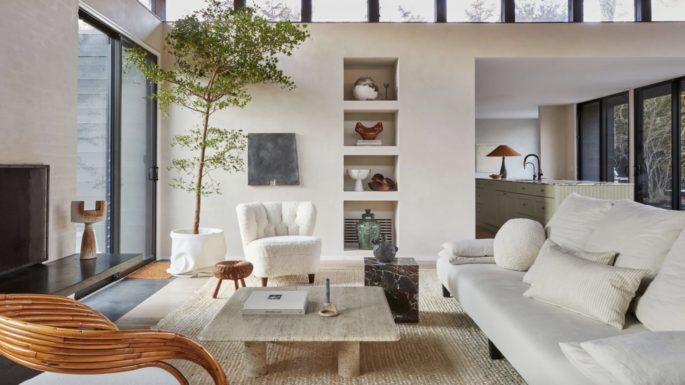
Athena Calderone’s living room at her recently renovated beach house in Amagansett, New York. Image via ArchitectualDigest.com
A Better System
Edelkoort says, “The true cost of the shut down in Italy and Japan, as well as Korea and China, and more countries to come, will lead to a global recession of a magnitude that has not been experienced before. It is not a financial crisis but a disruption crisis. People will stop moving around, stop going out, stop spending, stop going on holiday, stop going to cultural events. All sectors will be shaken. There will be no immediate cure.
We will have to pick up the residue and reinvent everything from scratch once the virus is under control. And this is where I am hopeful for: another, better system.
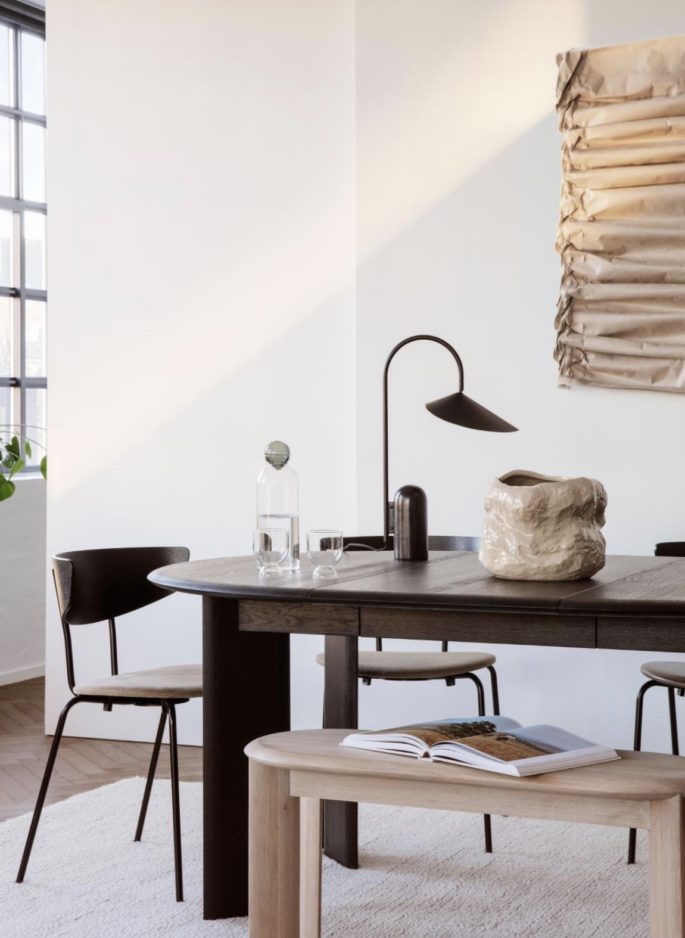
Ferm Living Spring/Summer 2020, fermliving.com
“Therefore, if we are wise – which sadly we now know we aren’t – we will start up again with new rules and regulations, allowing countries to get back to their know how and specific qualities, introducing cottage industries that would flourish and grow into an arts-and-crafts century, where manual labour is cherished above everything else.”
“A regulated shut down of production plants for two months a year could be part of this concept, as are collective creative studios that would produce ideas for several brands at a time, bringing about an economy of scale with a much lighter environmental footprint. Local industries and activities would gain momentum and people-based initiatives will take over with bartering systems and open tables, farmers markets and street events, dance and singing contests and a very dominant DIY aesthetic. My future forecast for the Age of the Amateur seems to come much faster then I anticipated.”
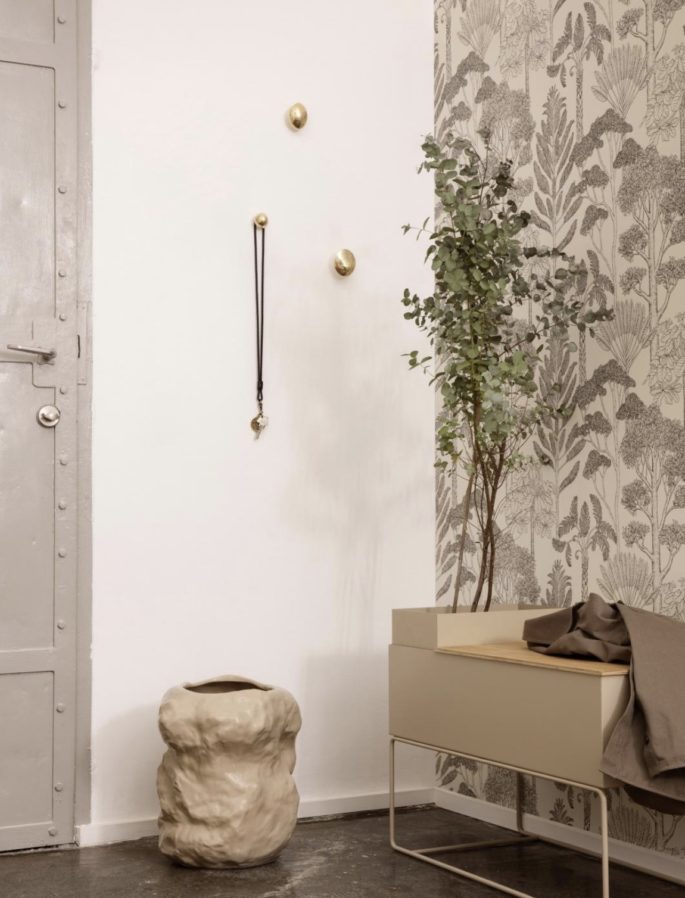
We will adopt a back to basics approach. The biggest trend will be the use of natural, humble materials and textures. Interior via Ferm Living Spring/Summer 2020, fermliving.com
Comfort Comes First
As a design expert, we have loved seeing the transition to creating spaces that promote well-being and emotional comfort. Our homes will increasingly become places that encourage mindfulness and foster wellbeing. People will want more from their spaces and strive to make it feel like a place of respite and relaxation. Read more, ‘The 50 Best Decorating Tips of All Time.’
Back to the Basics
With wellbeing and sustainability on the rise, the biggest trend will be the use of natural materials and textures. Humble materials like hemp, rattan, cane, and jute can add a huge impact to a space without feeling trend-driven or overdone. They can also be paired with more luxurious pieces for a high-end look which gives them versatility. Read more, ‘Back to Basics: 17 Timeless Pieces.’
More and more consumers well seek pieces that help them feel like they are saving the planet by being conscious of materials. Some designers call this new trend “Biophilia” since pieces are stylish, but use natural materials. Homeowners will move away from plastic over the next decade. Get set to see rooms outfitted in more and more rattan, wicker, caned, grasscloth, and naturally woven furniture. Read more, ’10 Interior Tips To Happy Up Your Home.’

In a world rampant with worry, there will be an emphasis on homes that feature materials, textures and products that soothe, reassure and offer security. Interior via Ferm Living Spring/Summer 2020, fermliving.com
A Place to Unplug
We’re seeing renovators installing fewer electrical outlets in the bedroom, so they can’t be surrounded by plugged-in devices where they sleep. This intentional move cuts down on temptation and makes the bedroom a peaceful oasis. TVs will be removed from bedrooms as we invest in beautiful bedding, window treatments, and moody, soft lighting. The new trend will be for the bed to sit in the centre of the room or at least away from the wall so that you can move around it. We will focus more on soft, serene textures and natural materials than patterns or colours. People are increasingly wanting their master bedroom to evoke a sophisticated hotel-like feel, to create an escape for them where they can shut down from the day and recharge.
Escapism
Immersive installations are propelling us into another time, space and dimension. In June 2020, the Victoria & Albert Museum will invite visitors to “experience a mind-bending journey into Wonderland” with its in-depth exploration of Lewis Carroll’s book Alice’s Adventures in Wonderland. The exhibition, titled ‘Alice: the 150-year-old story’ continues to inspire. While reality lately has pointed towards a dystopian future and hopeless outlook when it comes to the planet, artists are creating alternative worlds that inspire infinite possibilities. Consumers tired of today’s bleakness, are seeking portals that offer escapism, adventure, and a glimpse of what life could be like elsewhere.
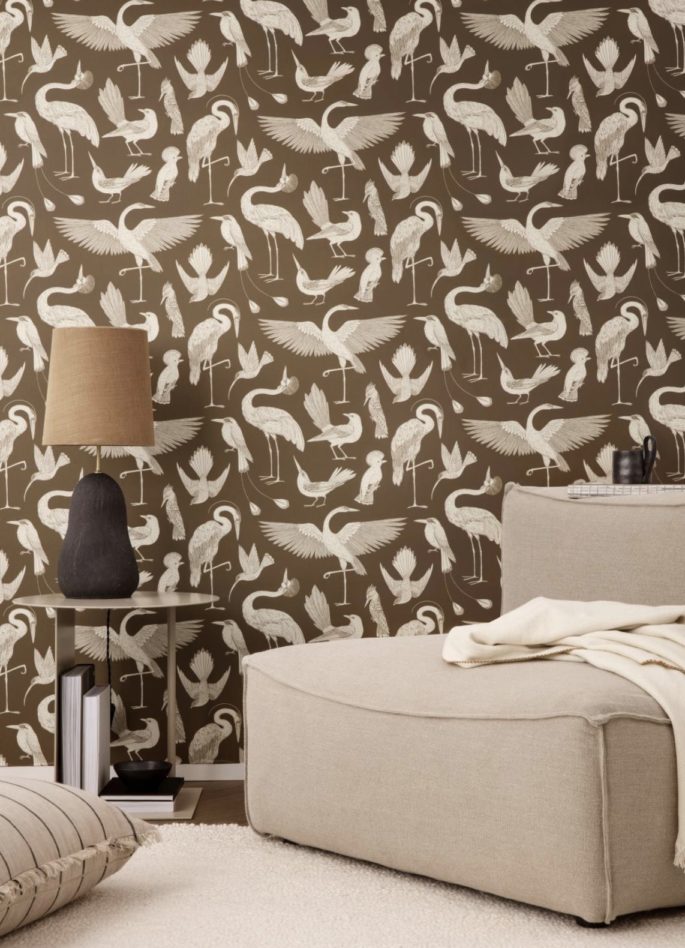
Wallcoverings featuring flora, fauna and alternative worlds will propel us into another time, space and dimension. Interior via Ferm Living Spring/Summer 2020, fermliving.com
Clean Homes
In a world rampant with worry, there will be an emphasis on products to soothe, reassure and offer security. Confronted with unnerving environmental, political and economic instability, people are more anxious than ever according to Wunderman Thompson Intelligence’s The Future 100: Trends 2020. It says we will see new products promising protection include Lishtot, a portable, keyring-shaped device that allows users to check the quality and safety of their water in an instant. There’s Mitte, a smart water filter, that promises to filter out modern aggressors such as microplastics, hormones and chemicals. Besides enabling people to breathe better air at home, we hope that Gunrid will increase people’s awareness of indoor air pollution, inspiring behavioural changes that contribute to a world of clean air. Recent research at the Massachusetts Institute of Technology (MIT) has found a direct correlation between happiness and air quality, showing that higher levels of pollution are associated with a decrease in people’s happiness levels. Read more, ‘Clean and Clutter-Free In 15 Minutes A Day.’
With its new product Bot Air, Samsung tapped into consumers’ fear of harmful environmental factors that are invisible to the naked eye. Introduced at CES 2019, Bot Air is a self-operating air purifier that patrols the home and monitors air quality. Ikea plans to debut the Gunrid air-purifying curtain in 2020; unique technology woven into the fabric breaks down air pollutants when light shines through it. “Besides enabling people to breathe better air at home, we hope that Gunrid will increase people’s awareness of indoor air pollution, inspiring behavioural changes that contribute to a world of clean air,” says Lena PrippKovac, head of sustainability at Inter Ikea Group. Why it ‘s interesting: Growing concerns about pollution and the negative impacts of today’s environment are behind a new wave of products and services created to mitigate unease about the world around us.
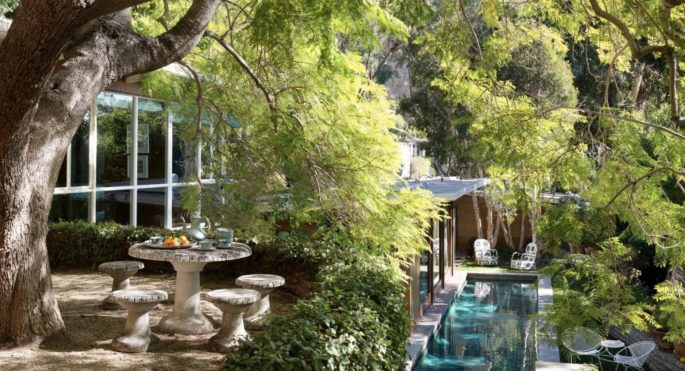
Dakota Johnson’s Mid-Century Modern Home in LA. Image via ArchitectualDigest.com
Disaster-Proof Homes
Also on WT Intelligence’s Future 100 trends for 2020: Forward-thinking architects are designing homes to withstand apocalyptic weather conditions. With freak weather events becoming the norm, from category five hurricanes to raging bushfires, architects are designing more resilient buildings to withstand an increasingly volatile climate. Lebron Lackey’s home on the coast of Florida gained renown in October 2018 as one of few homes to emerge unscathed amid the devastation wreaked by Hurricane Michael. Lackey reportedly spent twice the normal construction cost to protect his dwelling against 250-mile-an-hour winds and flooding. “We wanted to build it for the big one,” Lackey told the New York Times. “We just never knew we’d find the big one so fast.”
Bruce Beinfield of Beinfield Architecture has constructed a fortress on the coast of Connecticut. The house features several components that were specifically engineered to protect it from extreme weather conditions. Salvaged wood sidings and roll-down steel shutters create an “exoskeleton of lateral-bracing shield storm shutters that protect the large operable glazed surfaces from storms,” the firm explains. The house is raised on concrete pillars 15 feet above sea level—two feet higher than the Federal Emergency Management Agency’s flood regulations require. The ground-level garage is constructed on a base of reinforced concrete, with vents where floodwater can enter and equalize water pressure. Why it ‘s interesting? As climate concerns mount, the next generation of luxury homes is being built to provide heightened protection from extreme conditions.
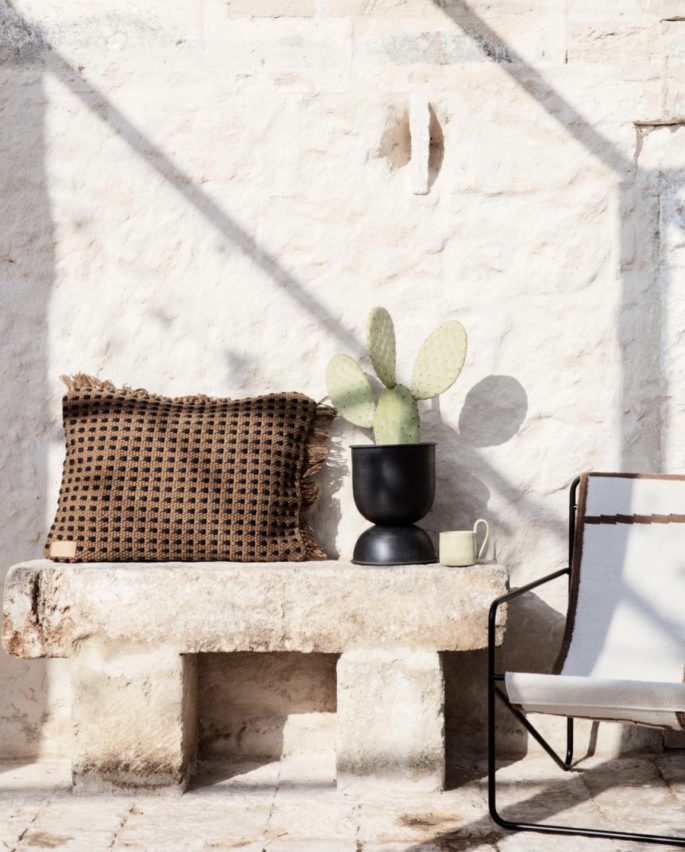
Ferm Living Spring/Summer 2020, fermliving.com
Wellness Architecture
Architects are constructing healthier living environments, further cementing the wellness movement. The Mayo Clinic has worked on Well Living Lab, which investigates the health implications of indoor environments and are “dedicated to identifying how buildings—and everything that goes in them—impacts human health and wellbeing.” It has created what it identifies as the healthiest condo in New York City, incorporating amenities such as antimicrobial surfaces, showers dispensing filtered water infused with vitamin C, in-duct aromatherapy and individually calibrated circadian lighting systems. Sustainable building practices—which show no signs of slowing down—focus on the health of the environment, and they prioritize the health of the occupant. There are now systems that integrate features such as indoor air and water purification and light and temperature optimization throughout the day to support natural sleep cycles. Read more, ‘How To Decorate For Happiness and Well-Being.’
The spaces that we inhabit influence and partially shape who we are
and how we are feeling.
As nearly every aspect of modern life gets the wellness treatment, architects are drawing this attention to the built environment, turning wellness-infused living spaces into the latest luxury. The next generation of homes is taking building to new heights with health-enhancing elements built into their very structures with homes constructed specifically formulated to optimize wellbeing and to improve human health and wellbeing and enhance people’s health and wellness through the buildings where we live, work, and play.. buildings and offerings must align with standards from WELL’s seven categories–– air, water, nourishment, light, fitness, comfort and mind. The inn’s features include a biodynamic farm, a meditation garden and a top-of-the-line air filtration system. Why it ‘s interesting? Wellness-obsessed homeowners are seeking out new ways to supercharge their rest and relaxation—and are starting to look beyond activities alone to achieve this, choosing carefully considered environments built on a foundation of health and wellness. Read more, ‘Improve Your Mood With These 50 Top Decorating Tips.’
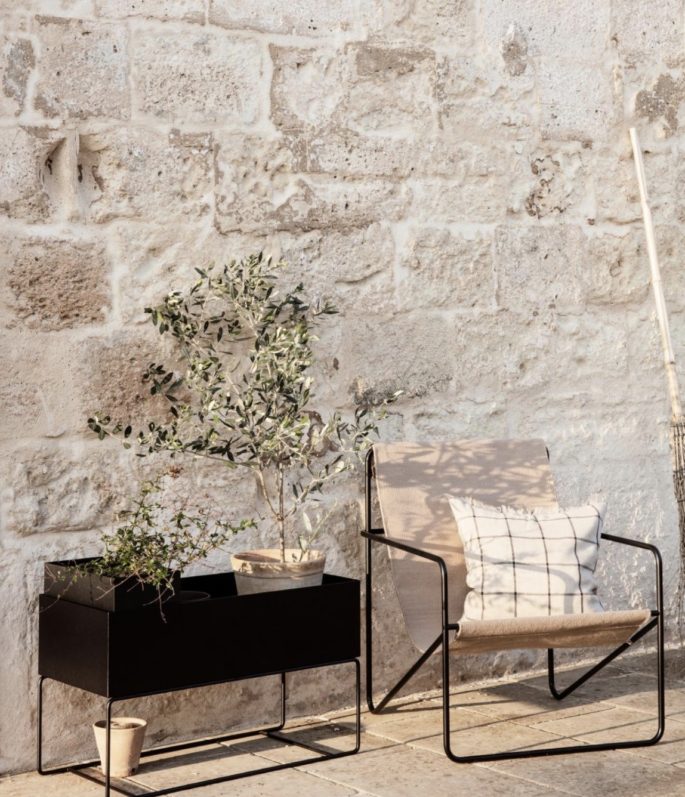
Ferm Living Spring/Summer 2020, fermliving.com
Carbon-Positive Living
We are entering a new decade of accountability. Being climate-smart is not an added cost, It’s actually about smart business and what the home model of the future will look like. We all have a responsibility to meet the reality of our global climate crisis head-on.
But patience is key with carbon positive practices: given that sustainability planning requires adopting a long-term view.
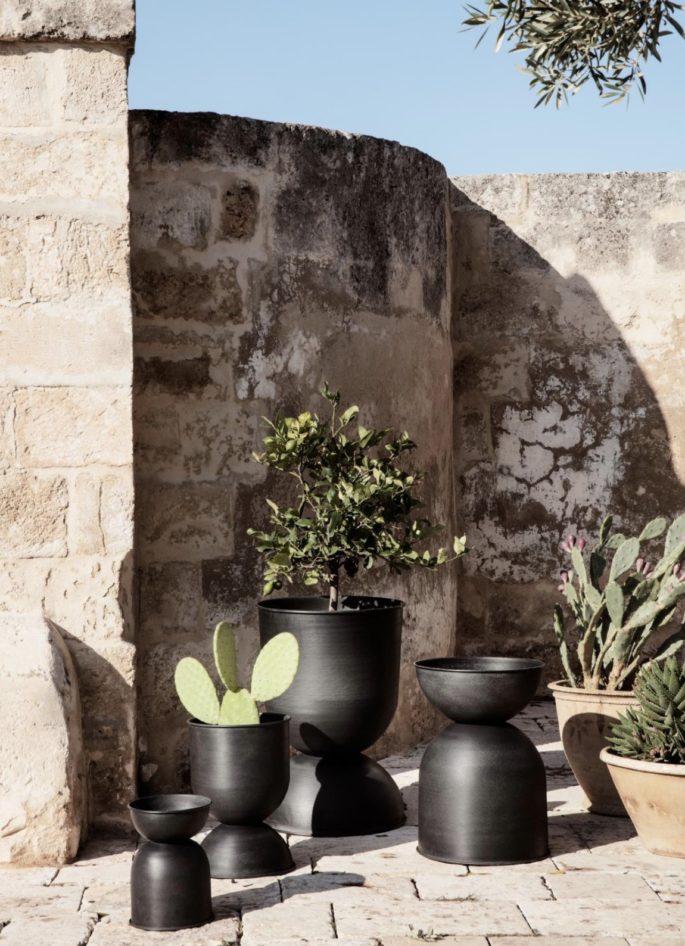
Ferm Living Spring/Summer 2020, fermliving.com
Sensory Homes
Nature will continue to be welcomed in rather than shut out of homes. For some of us, it’s simply a question of pointing out and making time for what’s already on our doorstep. You might head out at dawn to spot flora and fauna in the surrounding area. The soft light and quiet will help deepen your appreciation for local natural beauty, and you can draw on nature to differentiate it in a memorable way.
Playing ambient music through speakers will elevate the mood of your interior. Scenting your rooms with different natural fragrances can evoke a sense of peace and serenity. Your senses are connected so strongly to experience. Why it ‘s interesting? There’s an increasing awareness of the importance of being present in the moment.
At home we’ve long been focused on sight, taste and touch to create evocative experiences and memories, but we will increasingly expand our tool kit to also include smell and sound.
Anti-Instagram interiors
The newest interiors are turning away from the monotonously predictable design vernacular fetishized by social media. For example, Lucky Cat restaurant in London, opened in June 2019, consciously avoiding the colour-saturated, eye-catching aesthetic popularized on Instagram. In contrast to the vivid palettes, bold wallpapers and punchy light fixtures found in the countless trendy eateries just begging to be photographed, Lucky Cat’s deep colours and dim lighting create a shadowy atmosphere that isn’t meant to translate well on screen. Design studio AfroditiKrassa “deliberately went dark” to discourage people from sharing images on Instagram. “We tried to work with materials and colours that are subtle and classic, not too shouty,” the studio’s founder, Afroditi Krassa, told Dezeen. “How many times do you visit a place because it looks great in a picture but disappoints in real life?” Lucky Cat’s distinctive environment prioritizes the tactile over the visual, creating depth through texture rather than relying on attention-grabbing. graphics. “There is relatively little contrast between colours, pattern and finish, yet a lot of richness in texture and tactility—Lucky Cat is a layered design that reveals more every time you visit. The dark and sensual design at Marcus, the restaurant and bar at Montreal’s new Four Seasons hotel that opened in May 2019, similarly encourages in-situ enjoyment. The design is “deeply rooted in intimate interactions, singular moments, and glamour. These designs signal the end of a flashy “look at me” era that canonized experiences and spaces crafted expressly for sharing on social media. Going forward, consumers will respond to spaces that encourage them to live in the moment, rather than experiencing the world through the lens of their phone.
The anti-excess movement
It’s taking root in the furniture and homewares industry, and is particularly strong among the key millennial and generation Z markets, which are adopting secondhand and vintage items two and a half times as fast as other age groups. The secondhand market isgrowing faster than the primary market; the 2019 BCG-Altagamma “True-Luxury Global Consumer Insight” study estimates that luxury resale will grow at an average annual rate of 12% through 2021, compared to the 3% growth rate for the primary market over the same period. The archetypal insatiable consumer is becoming an outdated relic of the 20th century as consumers turn a more discerning eye on purchasing. “Millennials and gen Z are disrupting the market and placing greater importance on the social and environmental impact of their purchases than previous generations. Rising generations are buying with less frequency and more mindfulness, creating a better model for consumerism.
Anyone buying in a blindly greedy way should be cautious –
they are totally out of touch.
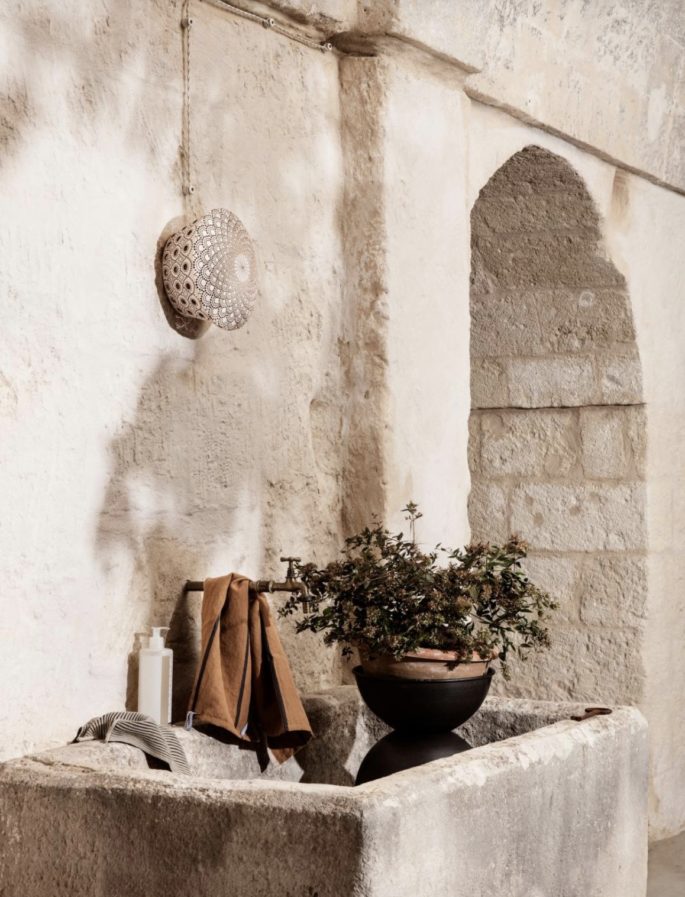
Ferm Living Spring/Summer 2020, fermliving.com

